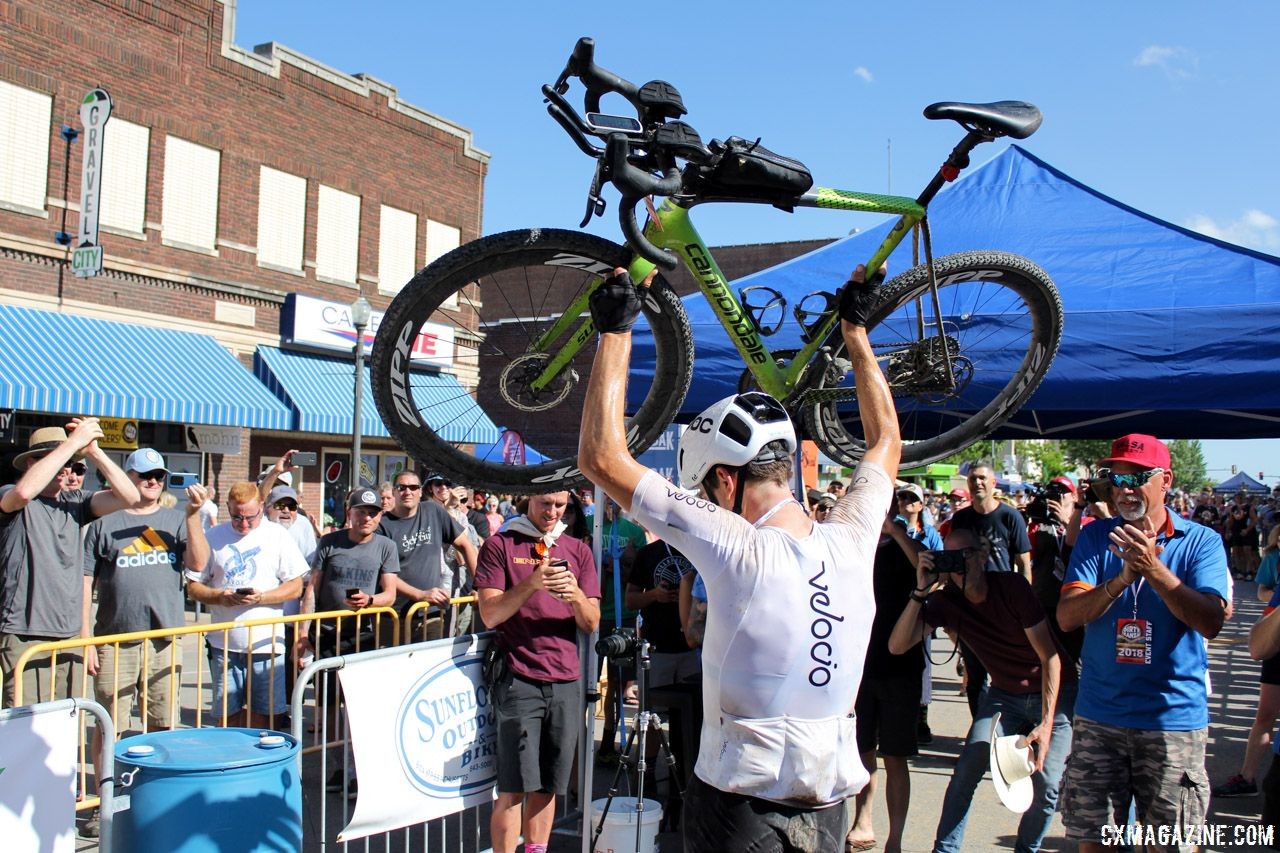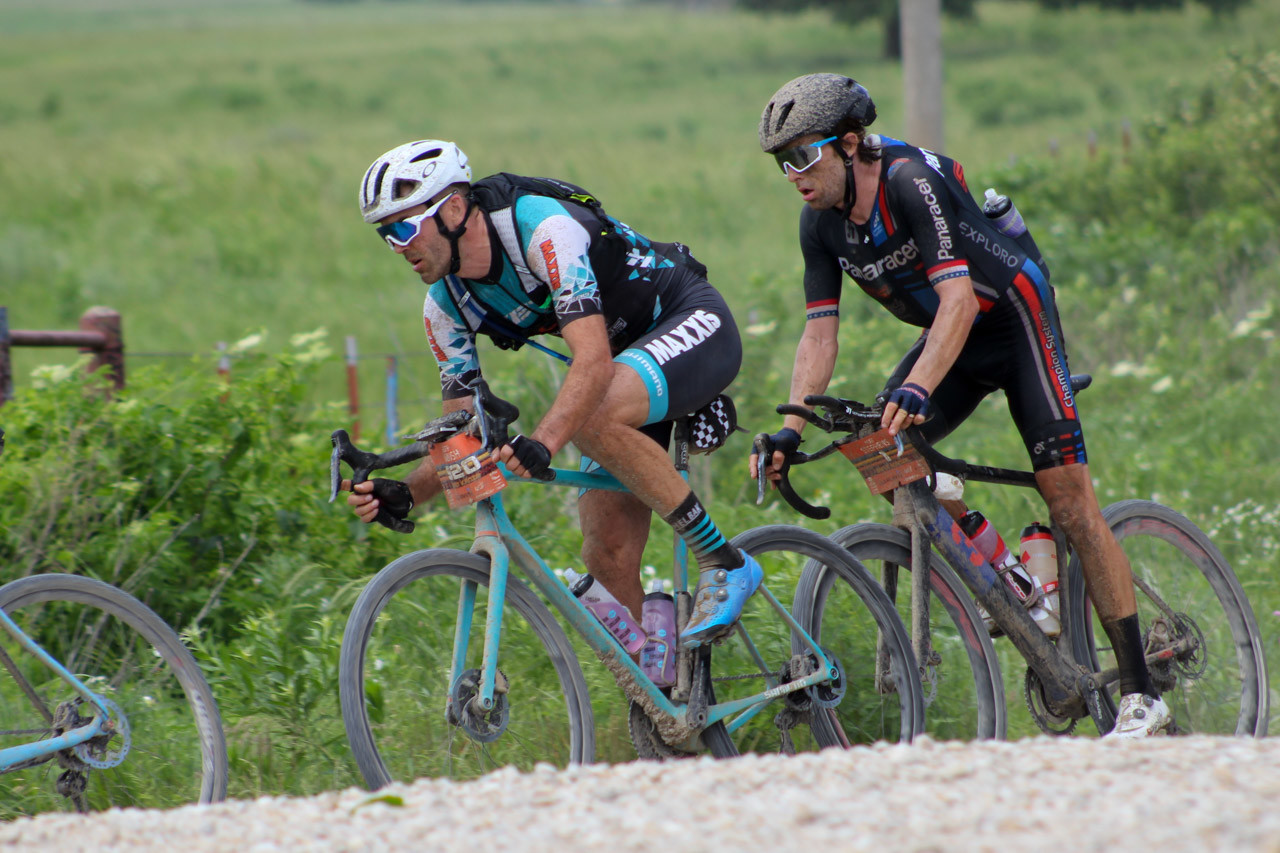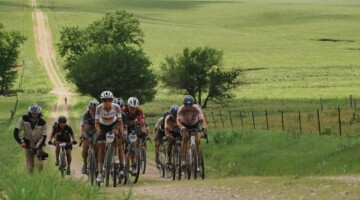For several days earlier this month, the Dirty Kanza 200 gravel race seemingly captured the attention of the online cycling world. After the dust settled from the great day of racing in Kansas’ Flint Hills, discussions about aero bars and rules in gravel racing took over the discussion.
Last week, we offered readers the chance to weigh in on your motivations for racing gravel, aero bars and how rules for gravel should be made. In addition to over 1,000 poll responses, we also got well over 100 comments across our site and social media feeds. Today, we have the results from our poll and a look at some of the responses folks offered. (Yes, yes, we actually read the comments, despite all warnings not to).
Why Do You Race Gravel?
In theory, participating in a gravel event is kind of a choose-your-own-adventure proposition. Want to race? Head to the front and try not to get dropped from the lead group. Looking for a challenge? Start somewhere in the middle or back and take in the sites and all the bacon and whiskey hand-ups to get the most from the experience.
When it comes to results, we tend to focus on the front of the gravel races we cover, but as Ian Tubbs mentioned in our story about his fourth-place finish at the Dirty Kanza 200, the heart and soul of gravel events are the amateurs who are slogging it out to finish the challenging events. Without their energy and stories, gravel events would be … road races?

Amateur racers are the heart and soul of gravel events. © Z. Schuster / Cyclocross Magazine
To help frame our discussion of rules in gravel, we wanted to get a sense of why the Cyclocross Magazine gravel community does gravel events. Sixty-one percent of respondents said they are in it for the challenge and adventure. Add in the 4% who view gravel events as social rides, and that number adds to 65% of participants who are not there primarily to “race.”
On the other side, 27% of you said you head to the gravel start line hoping to win or place as well as you can. So in theory, based on these numbers, the front third or so of any gravel race is hoping to race and the second two-thirds are there for the challenge, scenery, friendships, Twizzler hand-ups and adventure.
Finally, 8% of respondents chimed in to say they don’t race gravel.
Why Do You Do Gravel Events?
| To win | 7% |
| Place Well / Set PR | 20% |
| Challenge / Adventure | 61% |
| Social Ride | 4% |
| I Don't | 8% |
What About Aero Bars?
Aero bars were in the news before the Dirty Kanza 200 race in part thanks to Geoff Kabush’s anti-aero-bar op-ed published as riders were making their way to Emporia. Last year Mat Stephens used them to win and this year, Ted King had them on his winning Cannondale SuperX. Many amateurs also followed the leaders in going with the extra bars on their drop bars.
The status quo right now is to leave the use of aero bars up to race organizers. Two weekends ago, the Dirty Kanza said nothing about their use, while Lost and Found outright banned them. The same is true of two of the bigger races left on the gravel schedule. Crusher in the Tushar says no aero bars, while Gravel Worlds says nothing.
In our profiles of their aero-bar-clad bikes, Ted King and Craig Richey provided their thoughts, and in our story on fourth-place finisher Ian Tubbs, he admitted they helped him grind into the brutal DK200 headwind.

Ted King had aero bars on his winning Cannondale SuperX. Ted King’s 2018 Dirty Kanza 200 Cannondale SuperX. © Z. Schuster / Cyclocross Magazine
So what did CXM readers say? Our poll found a relatively split electorate on the issue of aero bars for gravel. Well, first off, nearly a quarter of you (24%) asked the question: “Why are we talking about aero bars?” One of the commenters agreed.
punkinpants123: Run what ya brung. And seriously, why are we still talking about this?
The other options we provided were: allow them, ban them or keep the status quo where it is the organizer’s choice. Of those who chose one of these three options, 21% said to allow aero bars, 37% said to ban ’em and 42% said to keep the status quo.
Aero Bars in Gravel Events?
| Allow them | 16% (21%) |
| Ban 'em | 28% (37%) |
| Organizer's choice | 32% (42%) |
| Why are we talking about aero bars? | 24% |
Responses from readers on the topic of aero bars varied quite a bit.
Brad C.: Aero bars should be up to the organizer, they know what is safe for their terrain and conditions, Lost and Found doesn’t allow them and for good reason. Other events do because they aren’t as risky for those.
James J.: Group riding on aero bars is unsafe. You don’t need rules-just common sense. Keep them on for long solo pulls but get on the hoods in the bunch. Or just leave them off. Crashing on the stony stuff is no fun at all.
Keith C.: Forget if aero bars are safe or not. Aero bars are the ugliest thing you could put on a bike!
Mark W.: Road racing has lots of crazy crashing, they don’t use aero bars do they?
Reg the Mole: I guess they will be allowed in some events until there’s a nasty incident involving a rider using them. My suggestion would be for a ban because at some time some Muppet is gonna try to ride something they shouldn’t whilst using them and it could get messy.
trvr_callaway: Charge $2000 in order to run aero bars and donate it to charity.
kobermeyer1: Aero bars on gravel? Poor etiquette yes, unsafe yes. There should be abundant heckling until it is an unspoken rule.
hollywood876:🤔let natural selection take place, aero bars + gravel = disaster if ya wanna pace line in that you take your chances
cat6forlife: Couple thousand on course. maybe hundreds with aero bars. all this talk of disasters on gravel with them. how many “disasters” were there on course this year due to aero bars? get real people. this is too much minutia. go back to talking about tires and what Camel Bak size to wear.
Rules in Gravel Racing
Our third poll question was about how rules should be made for gravel racing. The status quo is small rule books—the Dirty Kanza, for example, has 25 rules right now while Gravel Worlds has 9—with many more “unwritten” rules about how riders should race and support themselves while out on the course.
A few commenters summarized the feelings of a portion of poll respondents.
cycling_cosmonaut: It frickin’ gravel. Stop over thinking it and have fun.
Bill M.: I think we all need to not take these gravel events so darn serious and just have fun with them. Lets not turn these into a snobby road fest!
Eight percent of those who responded to our poll question said they don’t care about how gravel rules are made. With only 8% choosing that option, it suggests a good number of gravel racers do care about the issue, even if two-thirds of them are there for the adventure and not the podium.
A plurality of respondents (45 percent) chose the status quo of short rule books and “unwritten” rules. Fifteen percent wanted an official rule book and 20 percent wanted fewer rules. Eleven percent said to get rid of rules, results and podiums all together at gravel events. Then again, since folks seem to like the way gravel works right now, maybe we are over thinking it a bit.
Rules for Gravel Races?
| Status quo: A few rules and "unwritten" rules | 45% |
| Uniform rule book | 15% |
| Gravel needs less rules | 20% |
| No results / no podiums / no winners | 11% |
| I don't care | 8% |

Geoff Kabush and Mat Stephens rode together after Kabush expressed his anti-aero-bar opinions in the week leading up to the race. 2018 Men’s Dirty Kanza 200. © Z. Schuster / Cyclocross Magazine
One response we saw more than once is related to the idea that gravel events were originally intended as unsupported adventures. Events such as the DK200 that require riders to have small “pit crews” have changed the nature of what “self-supported” means for those events.
Pat M.: The whole gravel thing started as a self-supported race from point A to B. As long as you didn’t have outside help you were ok. You want to ride with a friend no problems. However, if you had friend fix your bike for you, you self DQed and finished the race. I have ridden the DK and many other ‘self supported’ races when you got a course description and they said good luck. Th e original aid stations (if any) was a truck parked on the side of a road with whatever you wanted at that point, like water and food. If you broke down hopefully a family member or friend could pick you up. If you didn’t have a ride you end up like me riding 30 miles on a flat front tire filled with grass. So with the races today, with so much support across the race, there needs to be a return to the past and self regulate and take ‘unsupported’ ( no mechanics please) seriously.
Another approach suggested was to let the marketplace of ideas (or race registrations) sort things out.
Troy Z., Let the race promoter put rules , or no rules for each race. Attendance will dictate if your going the right direction. Don’t over complicate races with tire size rules, drafting, aero crap.
N S Biker: A possible alternative approach …. In Poker, the dealer calls the game. Any of a number of different deals, wild cards, high / low values …. all pretty open but specified ahead of the deal for each hand. Gravel racing is at this point with the organizers (aka the dealer) in a position to say what is allowed and what is not. Distance, start times, limits on equipment, outside assistance, team-work …. all open and waiting. It then becomes the responsibility of the participant to read the Race Tech Guide and Rules. Problem there is so few will actually do that.
And then there’s the future that may be inevitable.
mikegbianchi: It’s just amazing that the sport evolves constantly. next step – ebikes with aero bars on fixed gear 29er/26” full squish riding backwards dirt enduros. with a 2 to 5 person tandem division.
Alex F.: Yes, everyone should be required to have tassels and an oversized bell on their bike
Here is a roundup of some of the other responses from CXM readers.
Brian C.: I don’t think so… I think a lot of people switched over to gravel for exactly that reason of having no rules. You can kind of do what you want… It’s not like road racing where there’s a bunch of bureaucratic BS dictating what you can and can’t do who can race what categories and so on.
Thomas H.: The same discussion happened when MTB Enduro Racing became more popular. When it`s a race and you want to win for money, fame, sponsors etc, you should do everything that’s within the rules to achieve your goal. eg. in North America there was an “unwritten rule” that you have to stay on the trails whereas in Europe you had to stay within the marked course, makes a big difference. So, if you want to do a race, make rules and apply to them, if you want to stay “grassroots” don`t do races.
bloibl: Throw a bunch of rules at it. Watch everyone walk away from it.
alanwaitwhat: Ughhh make gravel dirt again
deucept: It’s like Outback Steakhouse #norulesjustright
Thank you to everyone who took the time to respond to our poll questions and offer your thoughts.
Responses suggest gravel riders are happy-ish with the way things are currently done in gravel racing (which probably partly explains its growing popularity!), but as we saw with this year’s DK200, there is not total agreement on what the unwritten rules of gravel actually are.
With the discipline’s current participants divided and more and more cyclists discovering gravel, it seems the nebulous nature of gravel’s “unwritten” rules will continue. Will we be having the same discussion again next year, or will we maybe just agree to level the playing field by forcing everyone to ride a penny farthing?


























